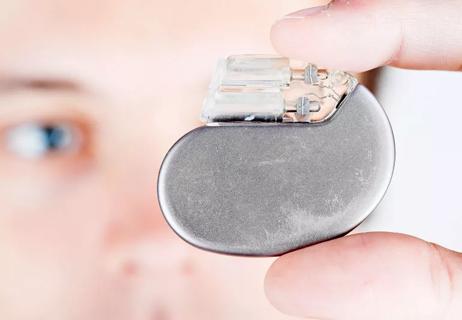Glitches are possible but unlikely

Can mobile phones really disrupt your pacemaker or implantable cardioverter defibrillator (ICD)? Ten years ago, research indicated they could. That’s why the U.S. Food and Drug Administration recommended keeping mobile devices — and the radiofrequency energy they emit — at least 6 inches away from cardiac devices.
Advertisement
Cleveland Clinic is a non-profit academic medical center. Advertising on our site helps support our mission. We do not endorse non-Cleveland Clinic products or services. Policy
But technology has advanced since then. So, do people with pacemakers and ICDs still need to follow the 6-inches rule?
One European study says yes. A second study cautions lingering under power lines.
Pacemakers can mistake interference from a smartphone’s electromagnetic field for a cardiac signal. That can disrupt the pacemaker and cause your heart to beat irregularly. Extreme cases can trigger your ICD to shock your heart back into normal rhythm.
Glitches like those are not common, but still possible, according to the study.
More than 300 people — some with pacemakers and some with ICDs — tested three common smartphones (HTC One XL, Nokia Lumia and Samsung Galaxy 3). Each phone was placed directly over the spot where a cardiac device had been implanted. Phones made test calls over various mobile networks while electrocardiograms recorded participants’ heart function.
Out of all participants, only one was affected by smartphone use.
“Even in worst-case-scenario testing of phones and other mobile devices, there is little to worry about,” says cardiologist Bruce Wilkoff, MD.
Dr. Wilkoff was not involved in the study.
It is very unlikely that symptoms will occur with normal use, he says. Still, to be safe, Dr. Wilkoff does recommend one precaution: “Don’t put a phone in a shirt or jacket pocket on the same side as your pacemaker or ICD,” he says. “This will eliminate all risk.”
Advertisement
Some doctors also recommend holding phones to the ear furthest from the cardiac device.
High-voltage power lines and substations could potentially trigger the same problems for pacemakers and ICDs. But, again, it’s unlikely, according to a second European study.
Researchers tested 40 cardiac devices, exposing them to a range of voltages. They discovered no major concern for people who wear cardiac devices — as long as they’re programmed normally.
“Walking, running, biking or otherwise crossing under power lines is safe,” says Dr. Wilkoff. “Staying under them for too long may be an unnecessary risk, however.”
It’s also worth noting that magnets in devices like the Apple Watch and Fitbits are another mild threat to those with pacemakers, too. For the vast majority of people with pacemakers or ICDs, the risk of any environmental interference is minimal, he notes.
Advertisement
Learn more about our editorial process.
Advertisement

Fainting, heart palpitations and shortness of breath are just a few signs your heart may need help

Complications related to the implanted device leads may go unnoticed

Pacemakers steady heartbeat, ICDs reset the heart

You may notice this combination when you’re exercising or after standing up too fast

Calling 911 or emergency services should always be your first step

Mild heart attacks may cause less damage, but they can still lead to serious complications and require medical attention

A consistent exercise routine can bring you positive results from head to toe

Opt for plant-based foods and consider limiting alcohol and caffeine

If you’re feeling short of breath, sleep can be tough — propping yourself up or sleeping on your side may help

If you fear the unknown or find yourself needing reassurance often, you may identify with this attachment style

If you’re looking to boost your gut health, it’s better to get fiber from whole foods